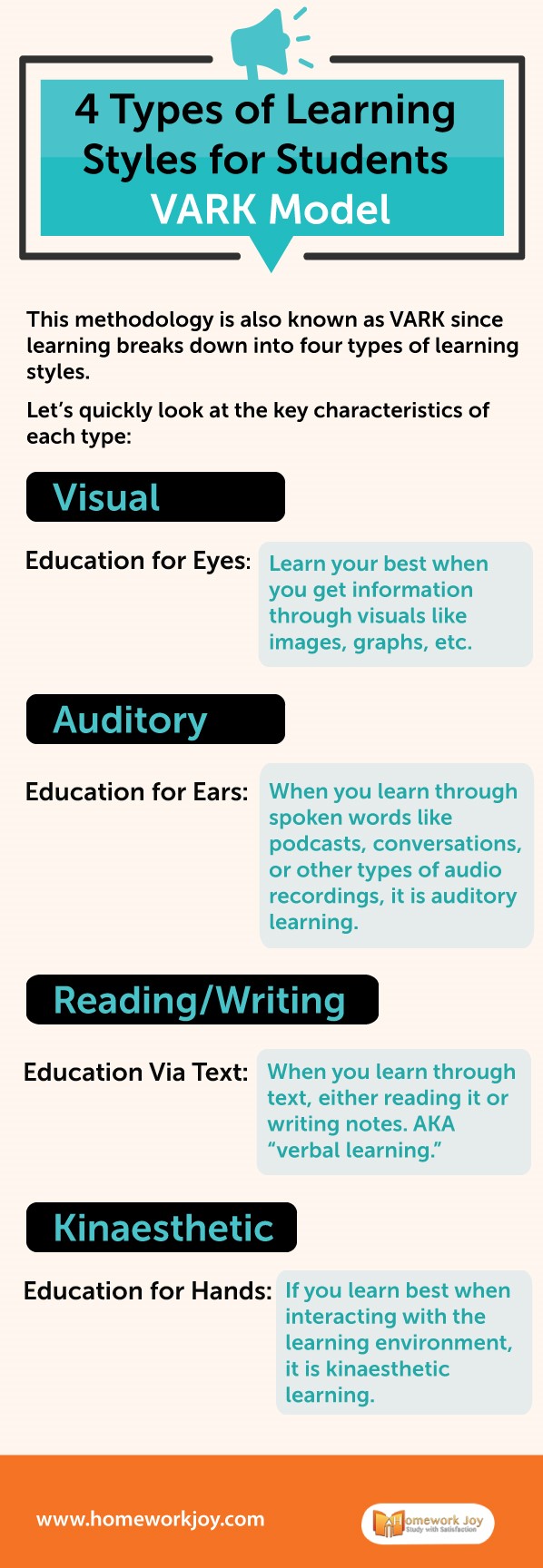We all experience the world in our own unique ways. That is why we learn in different types of learning styles. For example, some people learn by listening to lectures, while others learn by reading on their own. Thus there are different types of learning styles by different people. The standard methodology is known as VARK since learning breaks down into four types of learning styles. So V is for Visual, A is for Auditory, R is for Reading, and K is for Kinaesthetic. Together these styles form the VARK model of learning.
Also, read some of our latest posts:
How to Write a Journal Step by Step | Writing Tips
Let’s quickly look at the key characteristics of each type:
Visual
Education for Eyes: Learn your best when you get information through visuals like images, graphs, etc.
Students who internalize or synthesize information through graphics depictions or images are called visual learners. They respond to arrows, charts, diagrams, and other meaningful symbols. Visual learners tend to be holistic learners.
Auditory
Education for Ears: When you learn through spoken words like podcasts, conversations, or other types of audio recordings, it is auditory learning.
Auditory learners are most successful as they have the opportunity to hear information present to them vocally. Thus students with this learning style may sometimes opt not to take notes in the class. Also, sometimes educators erroneously conclude that they are less engaged in their class activity.
Reading/Writing
Education Via Text: When you learn through text, either reading it or writing notes. AKA “verbal learning.”
Students who learn through these types of learning styles demonstrate a strong learning preference for written words. It includes written information in the form of handouts in class. Also, it includes PowerPoint slide presentation as well as an opportunity to synthesize information in the form of written assignments.
Kinaesthetic
Education for Hands: If you learn best when interacting with the learning environment, it is kinaesthetic learning.
These learners are hands-on. These are participatory learners who need to take an active role in learning processes to achieve their best in educational outcomes. Also, kinesthetic learners tend to engage all of their senses equally in the process of learning. As these learners have an active nature, they have the most challenging time succeeding in conventional classroom settings.
So these were some different types of learning styles that you must know to understand better. Henceforth, you can directly contact us for more online assignment help. Out experts are available to assists you, 24*7.
